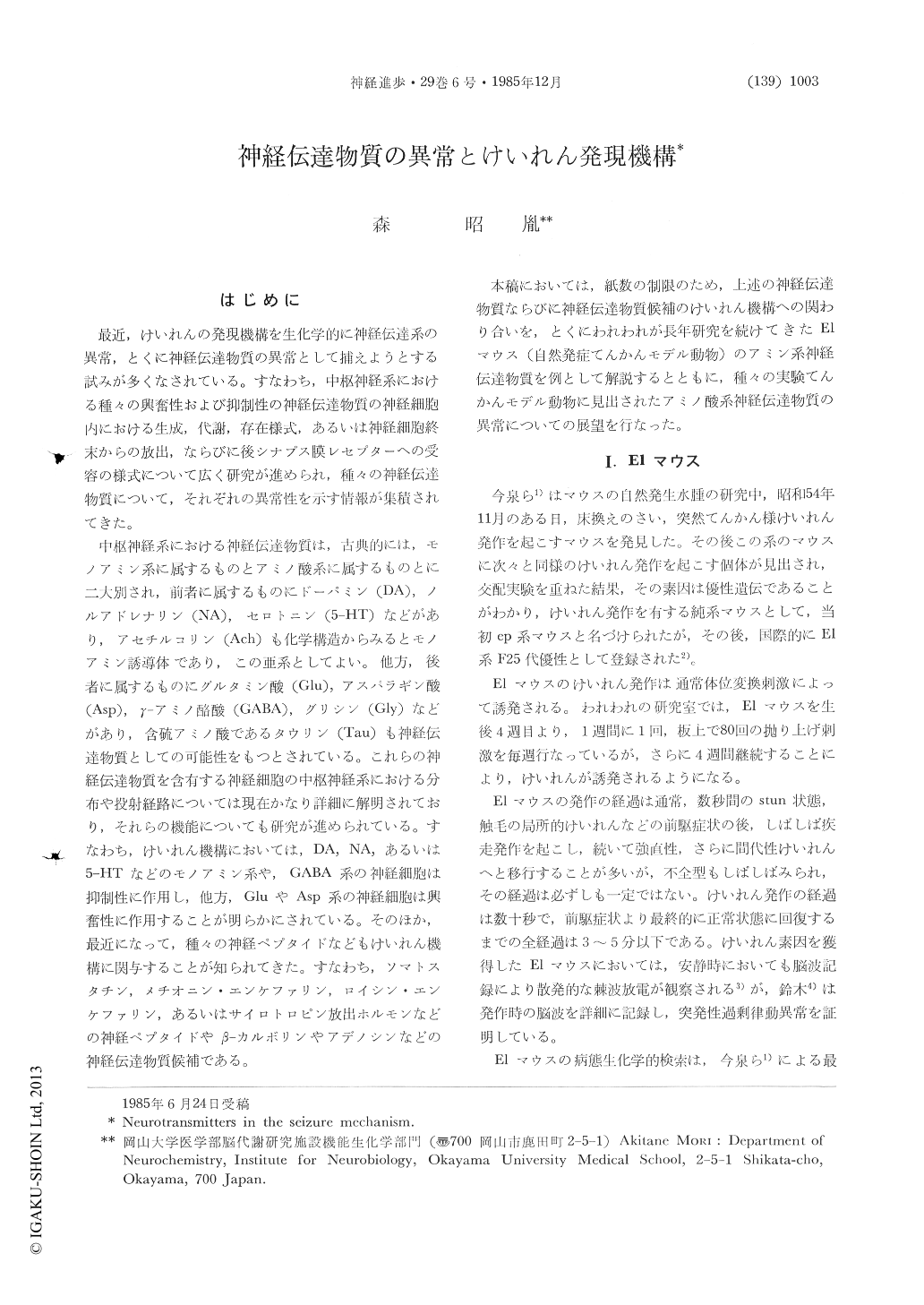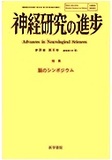Japanese
English
- 有料閲覧
- Abstract 文献概要
- 1ページ目 Look Inside
はじめに
最近,けいれんの発現機構を生化学的に神経伝達系の異常,とくに神経伝達物質の異常として捕えようとする試みが多くなされている。すなわち,中枢神経系における種々の興奮性および抑制性の神経伝達物質の神経細胞内における生成,代謝,存在様式,あるいは神経細胞終末からの放出,ならびに後シナプス膜レセプターへの受容の様式について広く研究が進められ,種々の神経伝達物質について,それぞれの異常性を示す情報が集積されてきた。
中枢神経系における神経伝達物質は,古典的には,モノアミン系に属するものとアミノ酸系に属するものとに二大別され,前者に属するものにドーパミン(DA),ノルアドレナリン(NA),セロトニン(5-HT)などがあり,アセチルコリン(Ach)も化学構造からみるとモノアミン誘導体であり,この亜系としてよい。他方,後者に属するものにグルタミン酸(Glu),アスパラギン酸(Asp),γ-アミノ酪酸(GABA),グリシン(Gly)などがあり,含硫アミノ酸であるタウリン(Tau)も神経伝達物質としての可能性をもつとされている。これらの神経伝達物質を含有する神経細胞の中枢神経系における分布や投射経路については現在かなり詳細に解明されており,それらの機能についても研究が進められている。
The multiple alterations of neurotransmitters and their receptors in experimental animal models of epilepsy have been elucidated recently with the aid of developments in neurochemical and analytical techniques. The intent or this report is to describe disorders of biogenie anines and amino acids, as neurotransmitters, observed in genetically epileptic rodents, the kindling model, electroshock, pentylenetetrazol seizures and topical convulsant models. Changes in serotonin (5-HT) observed in the El mouse brain were reported in detail, and compared to the disorders in other animal models of epilepsy.

Copyright © 1985, Igaku-Shoin Ltd. All rights reserved.


